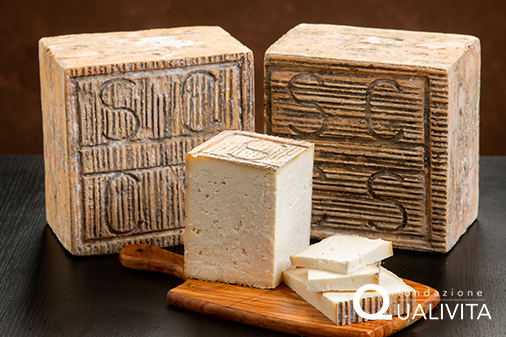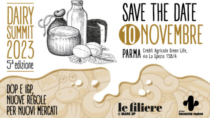Description
Salva Cremasco PDO is a soft raw cheese made exclusively with raw whole cow’s milk from Frisona Italiana and Bruna Alpina cattle breeds reared in the production area.
Production Area
The production area of Salva Cremasco PDO is within the entire territory of the provinces of Bergamo, Brescia, Cremona, Lecco, Lodi and Milan, in the Lombardy region.
Production Method
The dairy cows are fed with fresh forage and feed derived from cereals and their by-products, at least 50% of which is obtained from crops within the production area. The milk is curdled at a temperature of between 32 and 40 °C for 10-20 minutes, depending on climatic conditions and raw material. During this stage, the use of copper boilers is permitted as an alternative to equipment in steel or food-grade plastic. Only liquid cow rennet is used. The curd is broken twice: the first time helps to obtain a better consistency; the second is to obtain grains the size of a hazelnut. The curd is then extracted with the use of natural fibre or synthetic cloths and transferred to special wooden moulds. During this stage the product is given its identity mark with the use of a special printing plate. This is followed by dry salting or brining. The product is then ripened for a minimum of 75 days, during which time the cheese is turned frequently. The rind doesn’t undergo any treatment apart from being brushed with water and salt, or oil, grape marc and aromatic herbs.
Appearance and Flavour
Salva Cremasco PDO is quadrangular parallelepiped in shape with a thin, polished rind. The cheese is white, firm and crumbly, softer in the part immediately beneath the rind. It has an intense, aromatic flavour.
History
The origin of the name Salva Cremasco seems to derive from farmers’ desire to “not waste” (“salvare” means “to save”) the excess spring milk. The production and trade of cheeses began to take on an important role in Cremasco after the year 1000, as shown by the existence of a Paratico dei formaggiai, a list of sanctioned requirements which regulated the cheese guild. The widespread consumption in the area is evidenced by numerous paintings and frescoes from the 17th and 18th centuries, which depict dinner tables or scenes from lavish banquets with different types of cheeses. A study carried out by the Gruppo Antropologico Cremasco in 2001, entitled Crema a tavola ieri e oggi, highlighted images depicting large pieces of cheese; in particular, there is a small Salva Cremasco cheese on the table in the Cena di San Gregorio Magno by Paolo Veronese, which the illustrious Pontiff almost seems to be about to eat.
Gastronomy
Salva Cremasco PDO keeps well for several days if kept in the refrigerator, wrapped in its original packaging or a damp cloth to maintain its softness. It should be served at room temperature and is an excellent ingredient in numerous dishes, such as fried Salva Cremasco PDO balls, Tighe peppers with Salva Cremasco PDO, pear and Salva Cremasco PDO salad, walnut and marjoram fusilli with Salva Cremasco PDO sauce, courgetti flowers stuffed with Salva Cremasco PDO, and apple and Salva Cremasco tart.
Marketing
The product is marketed as Salva Cremasco PDO. It is available year-round and is sold whole or in wedges.
Distinctive Features
The rind of Salva Cremasco PDO is characterised by the presence of a surface micro-flora, which during ripening allows for the formation of other forms of native microbes.














